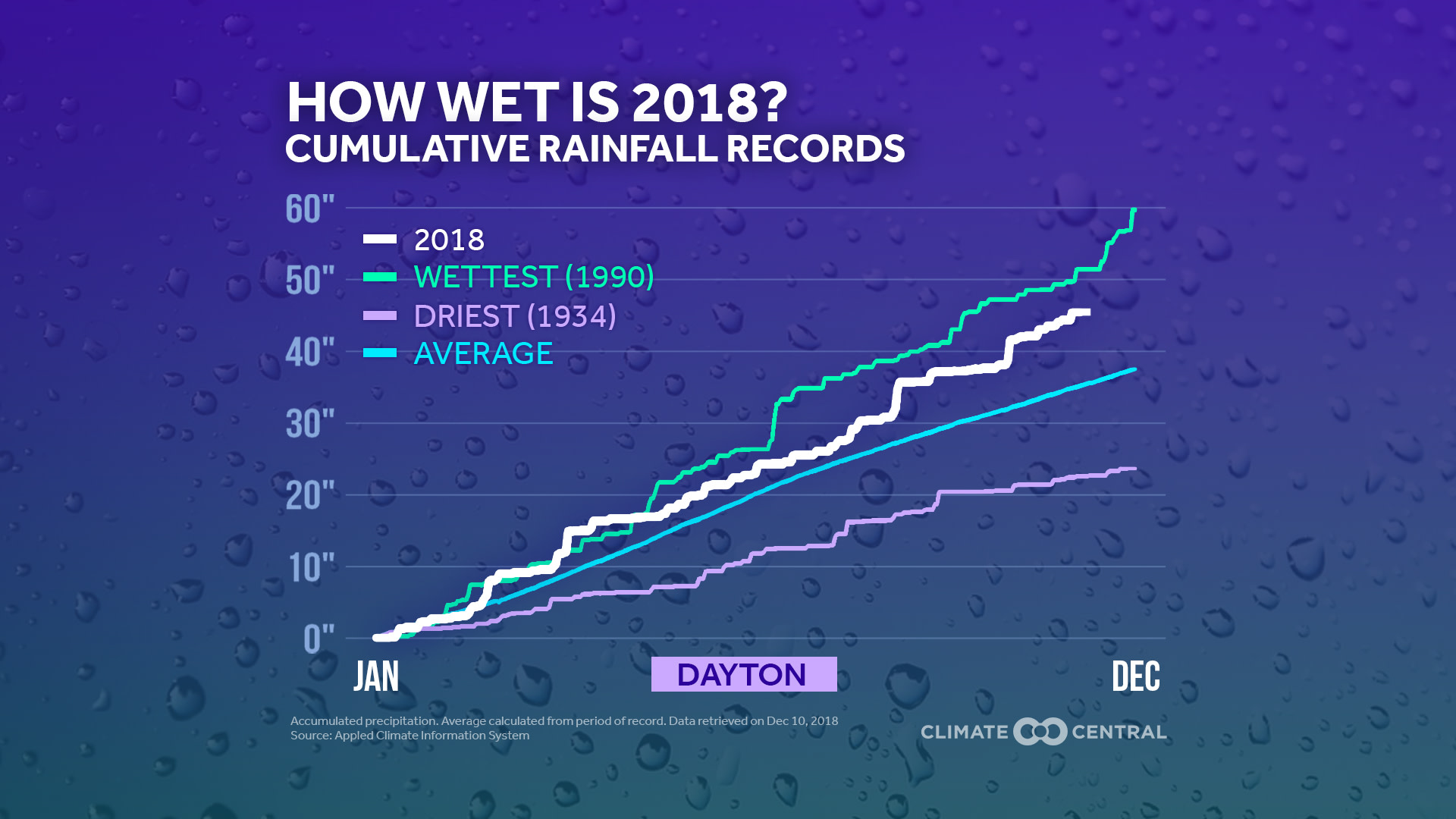KEY POINTS
Climate change is driving heavy rain in many U.S. states — and associated damages to water quality, infrastructure, and property
2018 saw record-breaking precipitation at 133 weather stations
In other areas, warming is linked to drought
At 2:40PM on May 27, the National Weather Service issued a flash-flood warning to the residents of Howard County, Maryland, west of Baltimore. Less than three hours later, cars were floating on the main street of Ellicott City, the county seat, as a torrent of water gutted the city’s historic center. It was the second time since 2016 that extreme precipitation had devastated Ellicott City’s old town.
2018 is on track to be the wettest year on record for the Baltimore area. There, and in many other parts of the country, heavy rainfall has become more common as the climate has warmed. Of 2800 stations analyzed by Climate Central, 133 in 21 states saw record precipitation totals this year, and 685 saw yearly totals that were among the top 10 on record. 2018 is already the fifth-wettest year in the contiguous United States since record-keeping began.
Warmer air holds more water: on average, when the atmosphere gets 1°F hotter, it can carry four percent more moisture. The Southeast, Northeast, and upper Midwest have seen the greatest increases in heavy rainfall events since 1958. Earlier analysisby Climate Central showed that 42 of the 48 states in the contiguous United States will see increased runoff risks from heavy rain by 2050.
Heavy rain can damage or destroy infrastructure, homes, and businesses. It can also pose a risk to public health, washing sewage into waterways, kicking up polluting sediments, and creating habitats for disease-carrying insects. And carbon pollution is not the only way that humans have made the problem worse. By laying down hard, impermeable surfaces like asphalt, communities and developers have limited the soil’s ability to absorb excess rain. Building in river floodplains is another source of risk. Heavy rain was a factor in several of this year’s billion-dollar disasters.
“When it comes to water, the past is no longer a good guide to what we can expect to experience. A warmer atmosphere can hold more moisture, which loads the dice for both more intense droughts and floods,” said Sandra Postel, the founder and director of the Global Water Policy Project. “Concerns continue to grow about the impact of prolonged drought and lower flows in the Colorado River Basin. In wetter regions, storms are dropping record levels of rainfall, causing massive flooding of roads and communities. Preparing for these extremes is critical to building resilience to climate change and its effects.”
________
If too much water can be a bad thing, so can too little — and just as climate change has made heavy rainfall more common in some areas, so has it encouraged droughts in others. As temperatures continue to climb from increasing greenhouse gas emissions, evaporation rates also increase. The higher evaporation rates dry out land surfaces faster, making droughts worse.
There are other ways that climate change can contribute to the problem. Warmer temperatures can cause more precipitation to fall as rain than as snow, for instance, diminishing the store of snowpack whose slow melting many communities rely on for water during the dry summer months.
As with flooding, human practices have contributed to these problems. In some parts of the Western United States, for instance, communities have pumped up groundwater faster than those reserves can be recharged. Heavy rainfall events are not enough to restore those aquifers in the near term.
“Drought is a major natural hazard for much of the western US, and climate change is already intensifying these events across the region,” said Benjamin Cook, a climate scientist at NASA Goddard Institute for Space Studies and at Columbia University's Lamont-Doherty Earth Observatory. “Understanding how this will affect drought risks and impacts on people, ecosystems, and water resources will be vital for increasing resiliency now and in the future."
FOR MORE INFORMATION:
Storm Events Database: A location-based catalogue of extreme precipitation and other storm events via the National Oceanic and Atmospheric Administration
Drought.gov: Data on drought across the United States via the National Integrated Drought Information System
Chapter 3 of the Fourth National Climate Assessment:An overview of the science around climate change’s impacts on U.S. water resources
